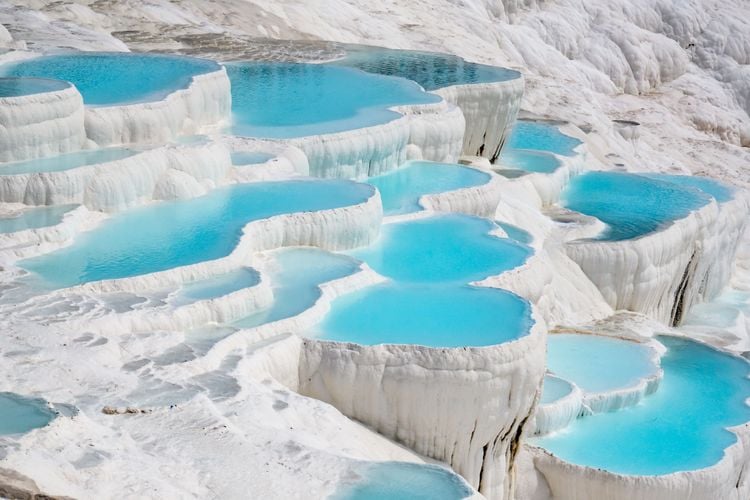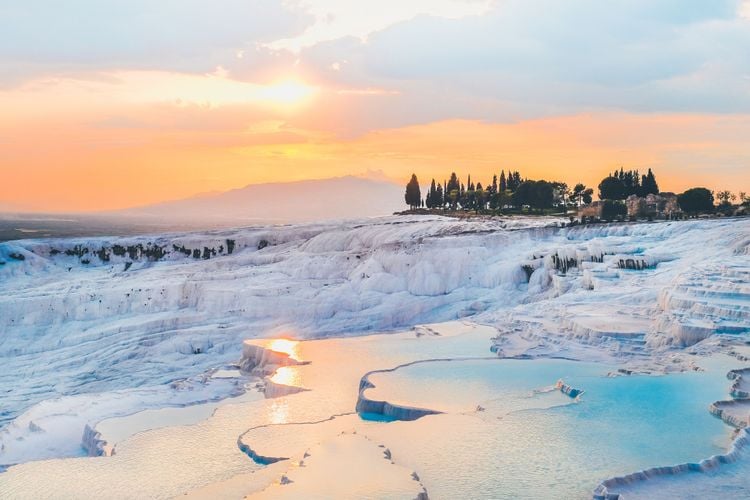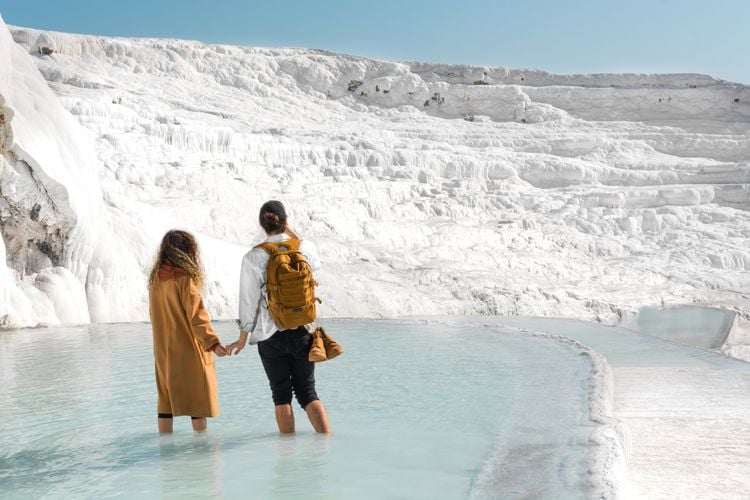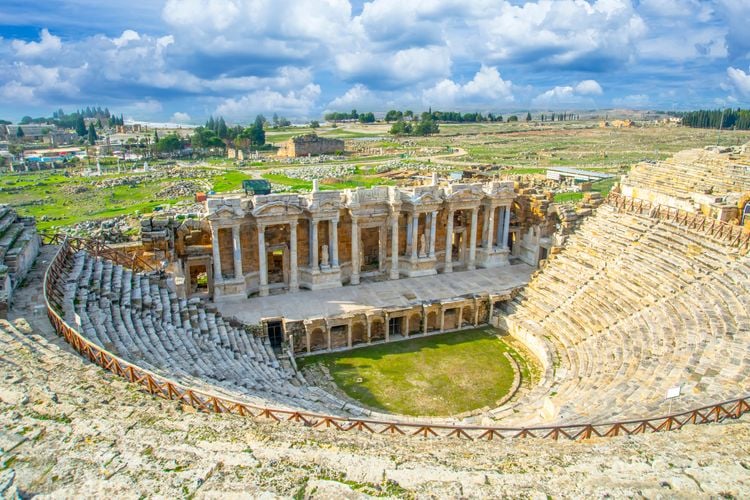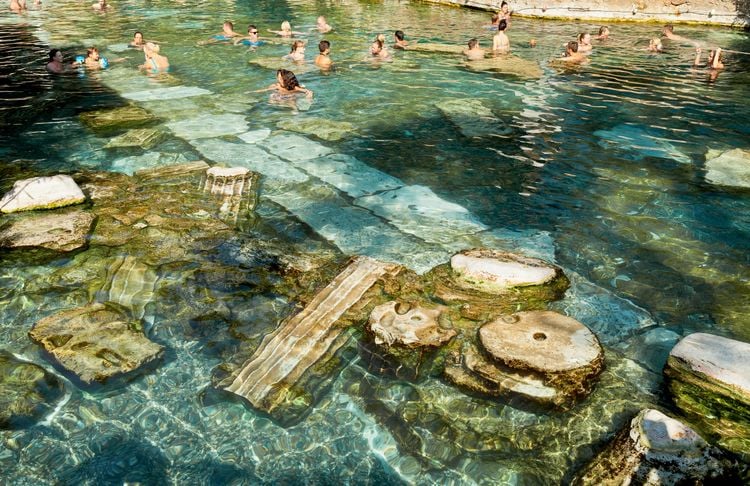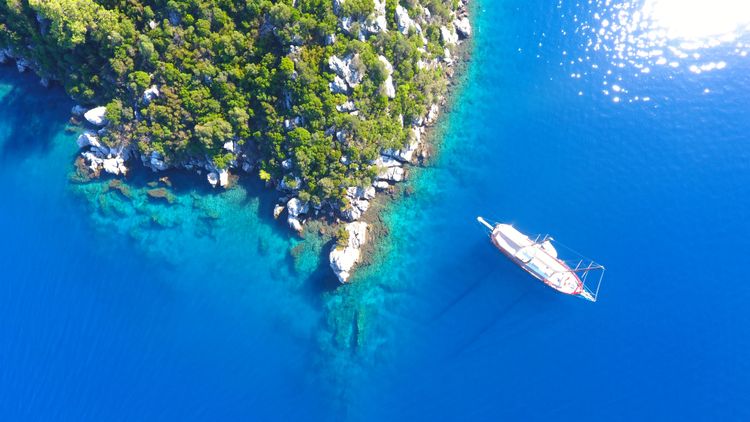One of Turkey's most photogenic tourist sites, Pamukkale was already well known centuries before the invention of tourism and the development of the site, now a UNESCO World Heritage Site.
Pamukkale lies inland, away from the Aegean coast and its beaches and large seaside resorts. And yet the site attracts a huge number of visitors, if only for the day. The reason: an almost unique landscape of dazzling white tufa rock, set in the middle of the green but dry, sun-drenched Anatolian countryside.
